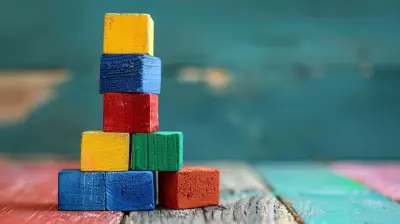How to Foster Leadership Skills in Students from a Young Age
13 October 2025
Let’s be real for a second: leadership skills don’t just appear one magical day like a surprise gift from the universe. You don’t wake up at 35, sip your coffee and suddenly become a great leader because you once organized a group project in high school. Spoiler alert: leadership is a muscle, not a microwave meal. And just like muscles, it needs to be exercised early and often.
So, how do we get the next generation of trailblazers, changemakers, and slightly bossy-but-in-a-good-way kids to kick-start their journey to leadership greatness? Buckle up, folks, because we’re diving into the messy, hilarious, and oh-so-rewarding world of fostering leadership in students from a young age.

Why Bother With Leadership Skills in the First Place?
Before we go turning seven-year-olds into mini CEOs, we need to ask the obvious: why even care about leadership at a young age?Well, think about it—leadership isn’t just about leading a group or bossing people around with a clipboard. It’s about problem-solving, emotional intelligence, being able to communicate clearly, and, yes, occasionally admitting you're wrong without spontaneously combusting.
Developing leadership skills early helps kids:
- Build confidence (bye-bye stage fright)
- Communicate effectively (yes, even without emojis)
- Learn responsibility (cue the “I forgot my homework” excuses slowing down)
- Work well in teams (life is basically one big group project, right?)
- Deal with failure gracefully (spoiler: failure’s going to happen, and it’s okay!)

It Starts at Home (Sorry, Parents, You’re On the Hook)
Set the Example
You want a tiny leader? Act like one. Kids are sneaky little observers. They see how you handle stress, conflict, and whether you thank the barista like a decent human being. They mimic more than they listen. (Sorry, but it’s true.)When you show kindness, take ownership for your mistakes, and speak up respectfully, your mini-me is taking notes. Leadership starts with example, not lectures.
Give Kids Responsibilities (Even the Boring Ones)
Yes, handing your child the TV remote doesn’t count as “building responsibility.” Start small: Maybe they’re in charge of feeding the dog, setting the table, or organizing their homework schedule (with some help, let’s be real).When kids feel a sense of ownership—genuine, non-patronizing responsibility—they start stepping up. You’re not just teaching chores, you’re teaching initiative, time management, and accountability. BOOM. Leadership gold.

School: The Leadership Playground
Group Projects—The Good, The Bad, & The “Why Am I Doing All the Work?”
Group projects are a breeding ground for leadership. And chaos. But mostly leadership.Encourage teachers (and parents, take notes too) to rotate roles in group settings. Let each student take on leadership positions—project manager today, note-taker tomorrow. It’s like trying on different hats. Some will fit, some will flop off. That’s the point.
Student Councils, Clubs, and Committees—Oh My!
One of the easiest ways to introduce leadership roles is through extracurriculars. Student councils, eco clubs, debate teams, chess clubs—they're like mini governments (hopefully with fewer scandals).Encourage participation, but here’s the kicker: don’t just reward the loudest or most charismatic kid. Leadership comes in many flavors: the organizer, the motivator, the silent strategist. Every role matters.
Encourage Public Speaking (Without the Nausea)
Does the idea of speaking in front of the class make your kid want to dissolve into a puddle? Completely normal. But public speaking is like kale—it’s hard to like at first, but super good for you.Start small. Reading aloud. Sharing a favorite book with the class. Asking questions in group discussions. Celebrate guts, not perfection. The confidence will come. Bonus tip: Toastmasters actually has a youth program. Look it up, you’ll thank us later.

Let Kids Fail (Wait, What?)
Okay, deep breath.Failure is not the enemy. Say it with me: “It’s okay to fail.”
In fact, it should be encouraged. Not like, “Hey, go bomb your spelling test,” but more like “Try that new idea. If it doesn’t work out, cool—we’ll figure out what went wrong and tweak it.”
Leaders aren’t made in comfort zones. They’re built in the messy, awkward, uncomfortable fails that teach resilience. Think of failure as leadership bootcamp in disguise.
Build Emotional Intelligence (EQ > IQ, Don’t @ Me)
We all know that one really smart kid who couldn’t lead a group of ants to a sugar cube. Intelligence is great, but emotional intelligence? That’s the secret sauce.Teach your kids to:
- Recognize their emotions (sad is not the same as mad, folks)
- Understand others’ feelings (yes, empathy is a leadership skill)
- Resolve conflicts peacefully (without taking someone’s lunch)
- Listen. Like, actually listen. Not just wait to talk.
Games, role play, journaling, and just talking about feelings go a long way here. Therapy-level EQ doesn’t hurt either, but hey, baby steps.
Use Storytelling to Teach Leadership
Remember how we learned morals from fairy tales and cautionary stories (looking at you, “The Boy Who Cried Wolf”)? Stories are powerful teaching tools.Use books, shows, or even real-life scenarios to spark conversations:
- “Why do you think Moana was a great leader?”
- “How did Harry Potter lead without always knowing what to do?”
- “What would you have done in Simba’s shoes?”
Stories stick. Teach them leadership through characters they admire.
Encourage Independent Thinking (AKA, Let Them Disagree)
Want a future leader? Let your kid tell you you're wrong (respectfully, of course).Encourage debates. Ask their opinion. Let them challenge ideas as long as it’s done respectfully and with reasoning. Independent thinkers become confident decision makers. And confident decision makers don’t just follow the crowd—they lead it.
Praise the Process, Not Just Results
Instead of only saying, “Great job on that A+,” try “I loved how hard you worked on that paper, even when it got frustrating.”Leadership is about persistence, adaptability, and effort. Not just winning trophies or getting all the answers right. Focus on praising:
- Effort over outcome
- Teamwork over solo success
- Risk-taking over playing it safe
Kids start to value the journey, not just the destination. And that’s a HUGE leadership flex.
Diversity in Leadership: Not All Heroes Wear Superhero Capes
Let’s not sugar-coat stuff—many leadership models are still, well… kinda limited. Kids should see ALL kinds of leaders: male, female, introverted, disabled, LGBTQ+, people of color, etc.Show them leaders that look like them AND leaders who don’t. Help them understand that leadership isn’t limited to one mold. It’s inclusive, dynamic, and as diverse as a good bag of jelly beans.
Be Patient (Even When You Want to Scream into a Pillow)
Fostering leadership skills is messy. There will be whining, procrastination, and days when “leading” looks like negotiating bedtime like a hostage situation.Breathe.
Leadership is a marathon, not a sprint. Celebrate the tiny wins. Be okay with the setbacks. Keep modeling, encouraging, teaching, and loving. You’re building future leaders, not IKEA furniture with a 30-minute assembly time.
Leadership Development Activities for Young Students
Let’s get practical. Here are some hands-on ways to integrate leadership growth without making it feel like a corporate training session in 3rd grade.Leadership Bingo
Make a fun bingo board with actions like:- Helped a friend solve a problem
- Took initiative in class
- Listened to someone else’s idea
- Apologized without being told to
First to fill a row gets a high five. Or, you know, a prize.
“Pitch It” Projects
Let students come up with solutions to real-life school or community problems. Let them pitch their ideas Shark Tank-style. Watch their creativity (and confidence) skyrocket.Peer Mentorship
Even in elementary school, older students can mentor the younger ones. It’s a win-win: the big kids learn responsibility, the little ones find someone to look up to.Final Thoughts: Don’t Force It, Just Fuel It
The goal isn’t to crank out a generation of rigid, rule-following mini managers. It’s to raise thoughtful, kind, capable young humans who aren’t afraid to speak up, step forward, and stick with it.Leadership isn’t a checklist—it’s a mindset. Start building it now, while they’re still figuring out which shoe goes on which foot. Because one day, they’ll be running the show. And won’t it be nice to say, “Yep, I helped build that.
all images in this post were generated using AI tools
Category:
Leadership SkillsAuthor:

Anita Harmon
Discussion
rate this article
1 comments
Archer Evans
Empowering students to lead starts early. Encourage critical thinking, decision-making, and collaboration. Ditch the outdated idea of passive learning—embrace dynamic, hands-on experiences that challenge them to take initiative. True leaders are forged through action, not lectures. Let them lead with confidence!
October 21, 2025 at 12:15 PM

Anita Harmon
Absolutely! Fostering leadership skills early through active, hands-on learning empowers students to think critically and collaborate effectively, nurturing confident leaders for the future.


